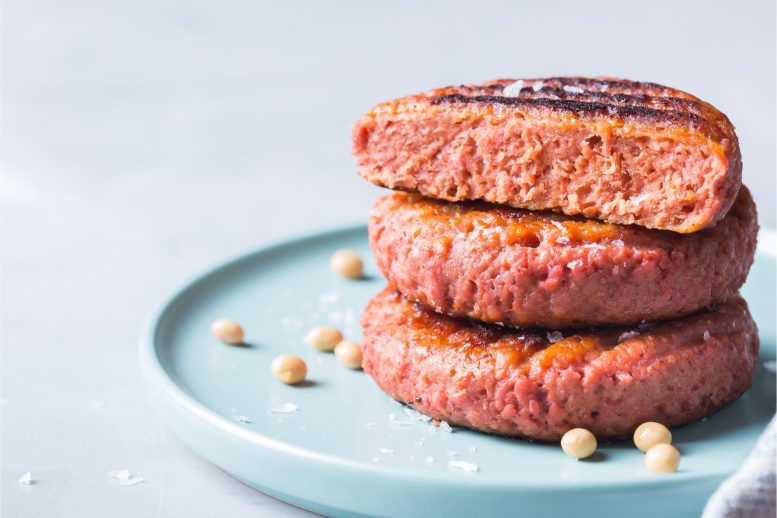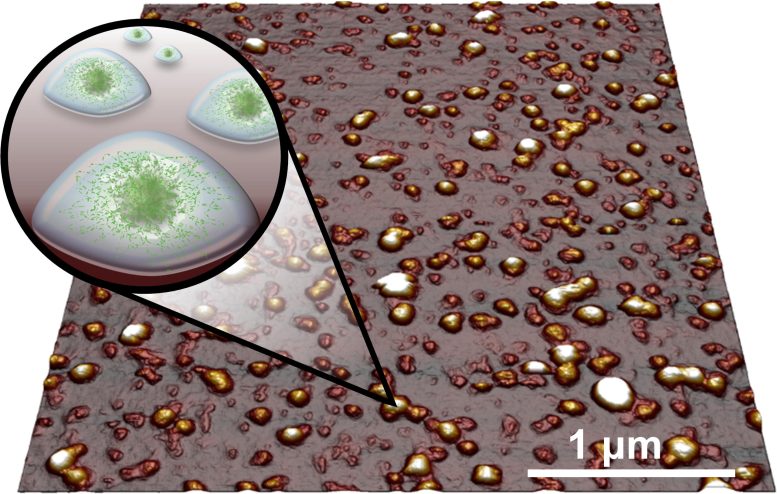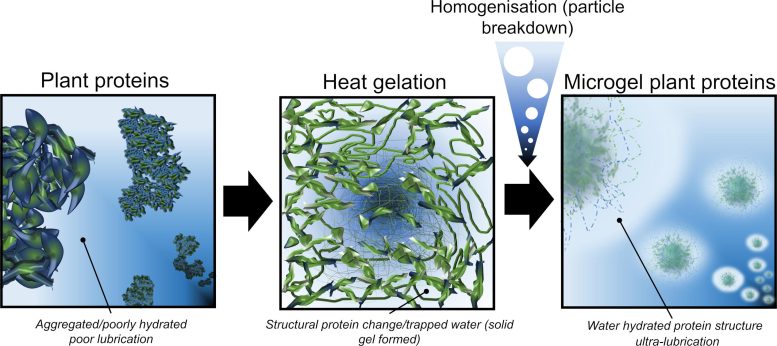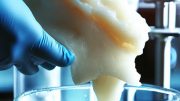
A research team has transformed plant proteins from dry and astringent to juicy and fat-like by creating microgels that trap water, enhancing texture and mouthfeel without adding any chemicals. The findings have the potential to boost consumer interest in plant-based proteins and contribute to meeting global climate change targets by reducing reliance on animal products.
One of the most significant barriers to the adoption of plant-based meat alternatives is their often dry and astringent texture upon consumption.
A team of scientists, headed by Professor Anwesha Sarkar at the University of Leeds, is pioneering a transformation in the texture of plant proteins. They are working to change the perception of plant proteins from being sticky and dry to a sensation that is juicy and rich, similar to fat.
And the only substance they are adding to the plant proteins is water.
Plant protein microgels
To bring about this change, the scientists created plant protein microgels, through a process called microgeletion.
Plant proteins – which start off as dry with a rough texture – are placed in water and subjected to heating. This alters the structure of the protein molecules which come together to form an interconnected network or gel which traps water around the plant proteins.
The gel is then homogenized, which breaks the protein network into a microgel made up of tiny particles that cannot be seen with the naked eye. Under pressure, as they would be when they are being eaten, the microgels ooze water, creating a lubricity akin to that of single cream.

Analysis using an atomic force microscope revealed that the plant protein microgels were not clumping together and were hydrated with water. Credit: Ben Kew, University of Leeds
Professor Sarkar said: “What we have done is converted the dry plant protein into a hydrated one, using the plant protein to form a spider-like web that holds the water around the plant protein. This gives the much-needed hydration and juicy feel in the mouth. Plant-based protein microgels can be created without having to use any added chemicals or agents using a technique that is widely available and currently used in the food industry. The key ingredient is water.”
Revitalizing consumer interest
The research team, who have published their findings in the scientific journal Nature Communications, say the dryness of plant proteins has been a “…key bottleneck for consumer acceptability”.
With the breakthrough, the research team hopes consumer interest in plant-based proteins will be revitalized, encouraging people to reduce their reliance on animal products for protein intake, a necessary step if global climate change targets are to be met.
More than half of the 18 billion tonnes of carbon dioxide equivalents produced each year from food production come from rearing and processing animal products.
The researchers say the protein microgels “…offer a unique platform to design the next generation of healthy, palatable and sustainable foods”.
Eureka moment
Throughout the investigation, the team had mathematically modeled the behavior of plant protein microgels and were confident their approach would work.
But the proof came in visualizations produced in the atomic force microscopy suite in the Faculty of Engineering and Physical Sciences at Leeds. Atomic force microscopy involves a tiny probe scanning the surface of a molecule to get a picture of its shape.
What those images revealed amounted to a proof of concept.

Plant proteins start off as clumpy and poorly hydrated. Water is added and they are heated. The proteins change shape and trap water around themselves, creating a gel. That gel is broken up into a plant protein microgel, with plant protein particles surrounded by water. Credit: Ben Kew, University of Leeds
Professor Sarkar added: “Seeing the images from the atomic force microscope was such an exciting moment for us. The visualizations revealed that the protein microgels were pretty much spherical and not aggregating or clumping together. We could see individually spaced plant protein microgels.
“Our theoretical studies had said this is what would happen but there is nothing quite like seeing it for real.”
Dr Mel Holmes, Associate Professor in the School of Food Science and Nutrition at Leeds and one of the authors of the paper, said: “This study reveals the ingenuity and depth of science involved in modern food technology, from the chemistry of proteins, the way food is sensed in the mouth to an understanding of tribology – the friction between materials and sensory cells in the mouth.”
“Tackling the big questions in food science requires interdisciplinary science.”
Wider spin-offs of plant protein microgels
Given the lubricity of the microgels, akin to that of a single cream, means they could be adapted for other uses in the food processing industry, such as replacing fat that has been removed from a foodstuff to develop healthier options.
Ben Kew, doctoral student in the School of Food Science and Nutrition at Leeds and lead researcher in the project, said: “This is quite a remarkable finding. It is striking that without adding a drop of fat, the microgels resemble the lubricity of a 20% fat emulsion, which we are the first to report.”
“Our experimental data supported by theoretical analyses also mean we could begin to use these plant protein microgels in foods where fat has to be removed to reformulate into healthier next generation plant protein food options.”
Reference: “Transforming sustainable plant proteins into high performance lubricating microgels” by Ben Kew, Melvin Holmes, Evangelos Liamas, Rammile Ettelaie, Simon D. Connell, Daniele Dini and Anwesha Sarkar, 7 August 2023, Nature Communications.
DOI: 10.1038/s41467-023-40414-7
The study was funded by HORIZON EUROPE, the European Research Council, and UK Research and Innovation.









What do you think is going to be better for a human to eat?
Something 100% whole and natural, made by God specifically for us to eat.
or
Something a bunch of people created in a lap with hundreds of ingredients with unknown long term effects on the body.
Seems like a pretty simple and easy choice to me.
Of course it’s the second one, because that way we might be able to avoid the apocalypse and we might not have a choice in the future either, might as well perfect this tech as soon as possible.